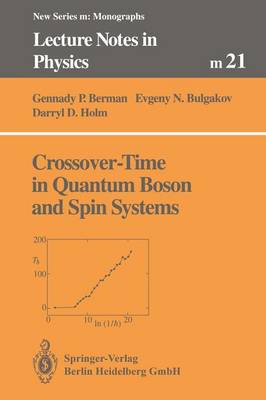We consider quantum dynamical systems (in general, these could be either Hamiltonian or dissipative, but in this review we shall be interested only in quantum Hamiltonian systems) that have, at least formally, a classical limit. This means, in particular, that each time-dependent quantum-mechanical expectation value X (t) has as i cl Ii -+ 0 a limit Xi(t) -+ x1 )(t) of the corresponding classical sys- tem. Quantum-mechanical considerations include an additional di- mensionless parameter f = iiiconst. connected with the Planck constant Ii. Even in the quasiclassical region where f~ 1, the dy- namics of the quantum and classicalfunctions Xi(t) and XiCcl)(t) will be different, in general, and quantum dynamics for expectation val- ues may coincide with classical dynamics only for some finite time. This characteristic time-scale, TIi., could depend on several factors which will be discussed below, including: choice of expectation val- ues, initial state, physical parameters and so on. Thus, the problem arises in this connection: How to estimate the characteristic time- scale TIi. of the validity of the quasiclassical approximation and how to measure it in an experiment?
For rather simple integrable quan- tum systems in the stable regions of motion of their corresponding classical phase space, this time-scale T" usually is of order (see, for example, [2]) const TIi. = p,li , (1.1) Q where p, is the dimensionless parameter of nonlinearity (discussed below) and a is a constant of the order of unity.
- ISBN13 9783662145067
- Publish Date 10 November 2013 (first published 26 July 1994)
- Publish Status Active
- Publish Country DE
- Publisher Springer-Verlag Berlin and Heidelberg GmbH & Co. KG
- Imprint Springer-Verlag Berlin and Heidelberg GmbH & Co. K
- Edition Softcover reprint of the original 1st ed. 1994
- Format Paperback
- Pages 268
- Language English
